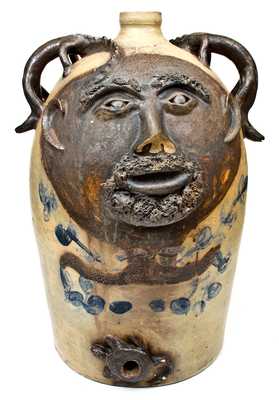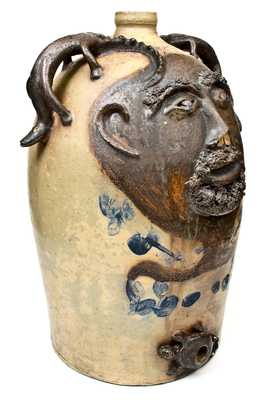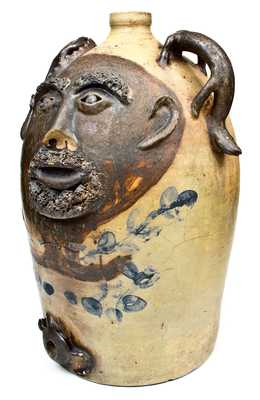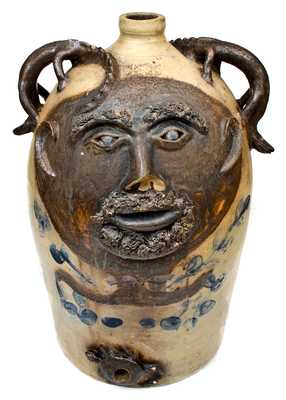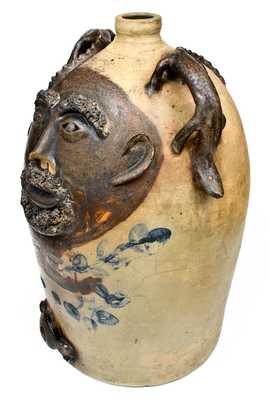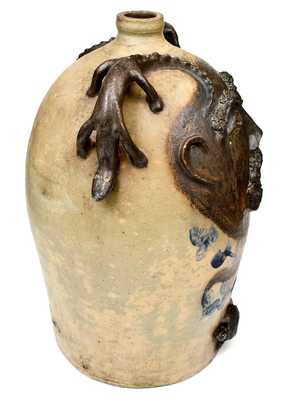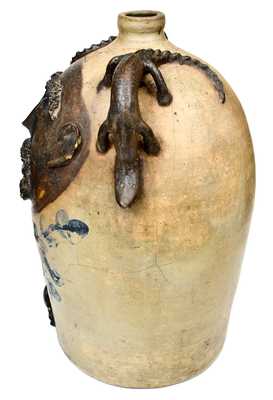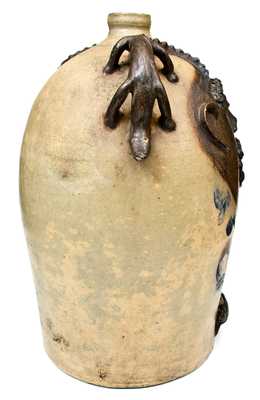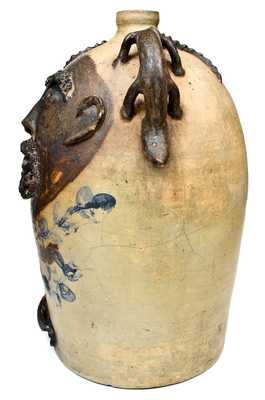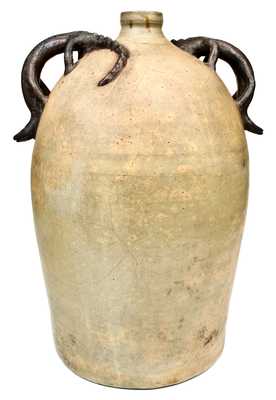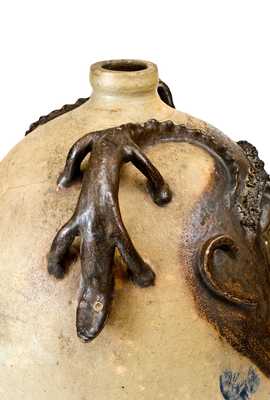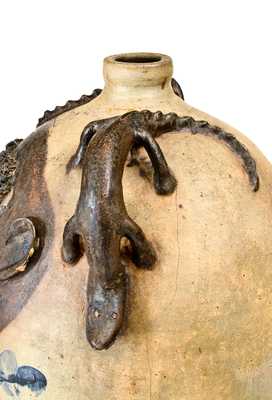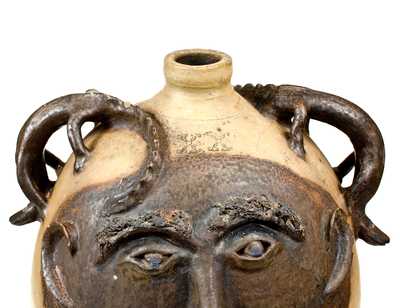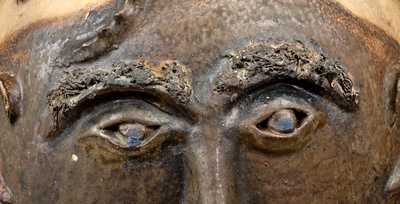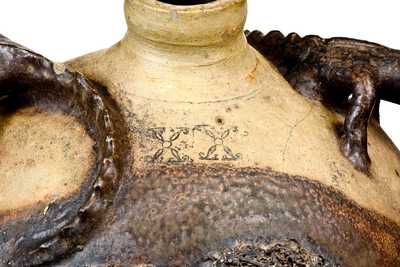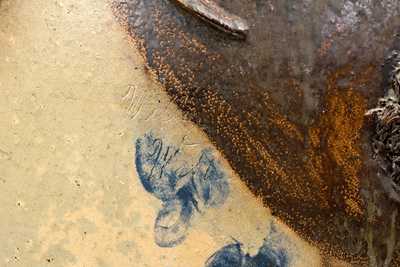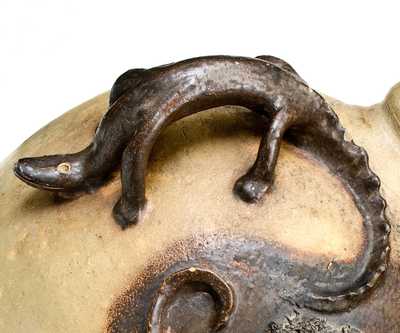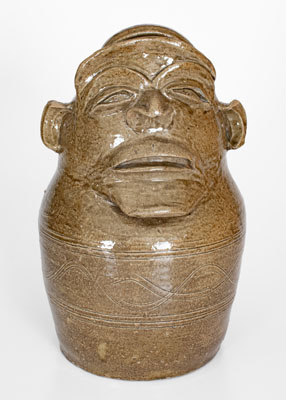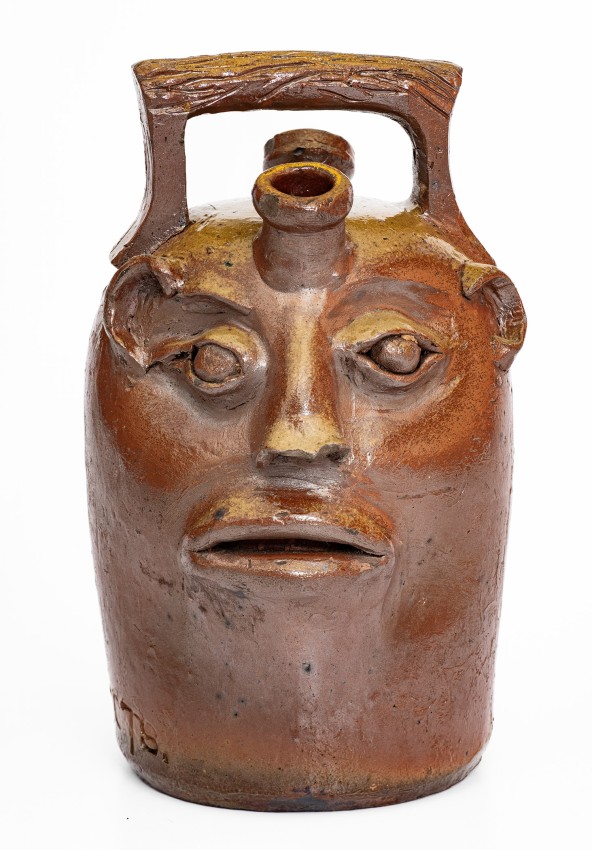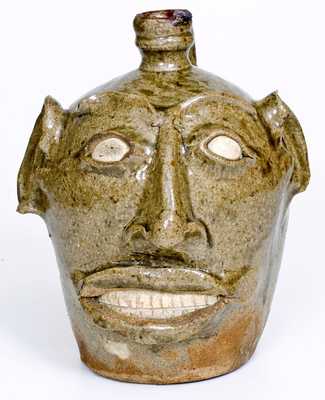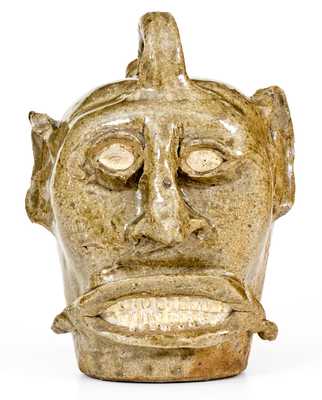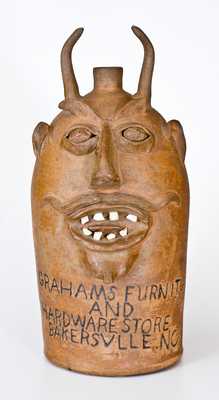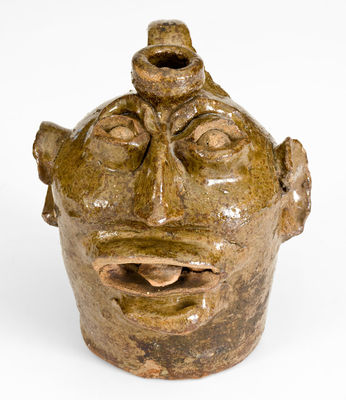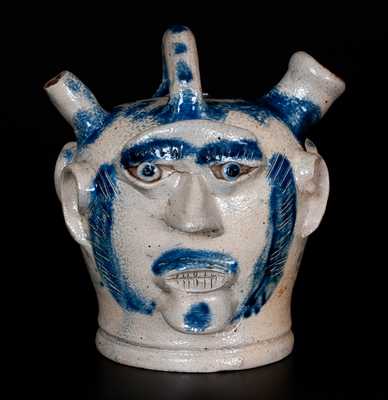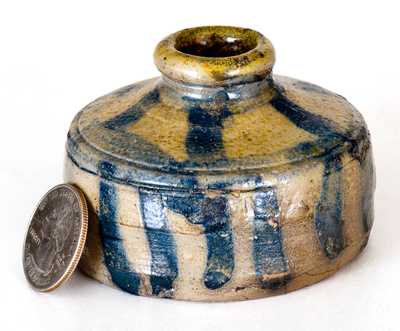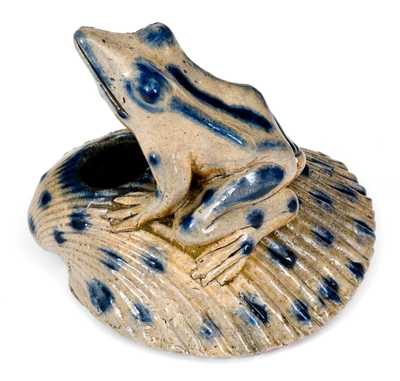Exceedingly Rare and Important Twenty-Gallon Salt-Glazed Stoneware Face Cooler with Applied Lizard Handles and Turtle Spout, Inscribed "Willi[a]m Wilbur", Ironton, OH origin, circa 1870, very-large-sized cylindrical jug-form cooler with semi-squared spout, large open handles modeled in the form of lizards, and spout at base in the form of a turtle, the front decorated with a large, hand-modeled and applied clay face of an African-American man. Lizard handles are masterfully-executed with upswept snouts, incised eyes and mouths, curved spiny tails, and delicate open legs that add support when lifting the cooler. Hand-modeled turtle spout includes similar spiny embellishments to the tail, impressed eyes, and an incised mouth, the animal positioned so that the cooler's beverage would be dispensed through the shell. The cooler's large applied face features applied coleslaw eyebrows, balled clay eyes girded to the vessel by semi-circular eyelids, C-scroll ears, a nose with carved nostrils, an open mouth with carved teeth on interior, and an applied coleslaw mustached and beard, extending over a broad, smooth chin. The face is significant in the quality of the modeling and in its size, spanning approximately 15" horizontally and 10" vertically on the cooler's front, making it one of the largest applied faces on any 19th century American ceramic face vessel. The surface has two-toned decoration, brushed in cobalt oxide and Albany slips. Cobalt appears below the face in the form of a series of brushed flowering vines, additionally forming the figure's pupils. Albany slip is applied over the handles, turtle-form spout, and the face, descending to form bifurcated brushwork below. Two ornate impressed X's at the shoulder indicate the cooler measures twenty gallons. Among the most expressive and striking examples of American stoneware known, this object was made famous from its appearance on the 1998 Louisville, Kentucky episode of the PBS series, Antiques Roadshow. Since that time, it has gained notoriety as one of the more memorable appraisals on the show. Unbeknownst to the owner of the cooler, it bears the incised name of its maker, "Willi[a]m Wilbur", to the left of the face. William M. Wilbur (1841-1917) was the grandson of Zanesville, Ohio potter, Thomas Wilbur and the son of Clark Wilbur, yet another stoneware potter. After being brought up in the craft at the family's pottery near Zanesville, Wilbur served in the Civil War in the 16th Ohio Infantry, and by 1870, had begun potting in Ironton, Lawrence County, Ohio--a town located directly across the Ohio River from Russell, Kentucky and fifteen miles southeast of Huntingdon, West Virginia. (Wilbur would eventually move west to California, leaving Ironton by the late 1870's.) Within the highly-important genre of the American face vessel, a field that truly transcends stoneware collecting, this cooler is regarded as one of the greatest and largest works. Its size, form, two-toned slip treatment, and over-the-top figural decoration, rank it among the very best examples of American stoneware still in private hands. Large chip to nose. Several other small chips to applied decoration. Thin lines to body of cooler. H 25".
Link to the Antiques Roadshow Segment Featuring the Cooler

